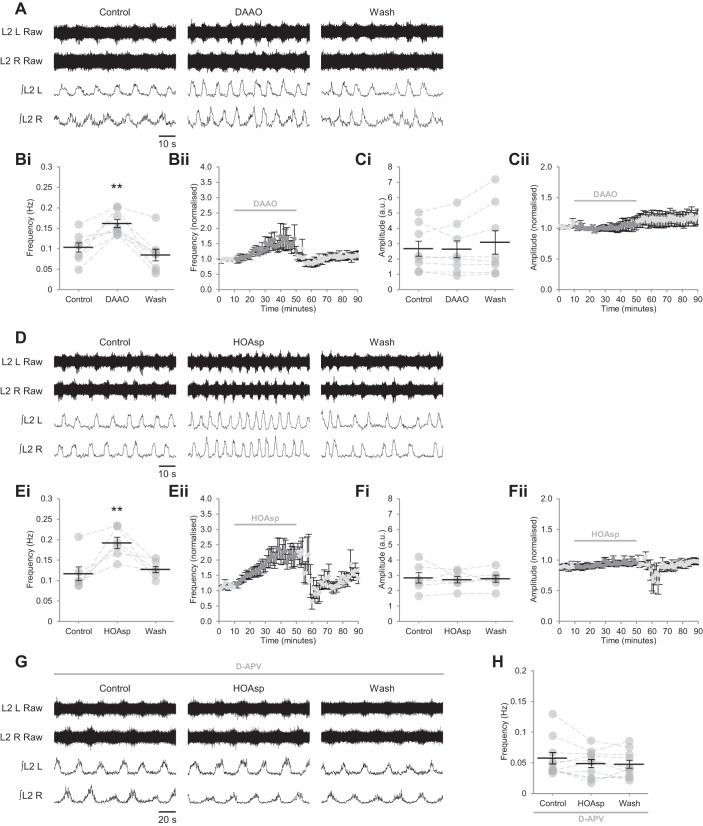Fig. 4.
Endogenous d-serine acts via NMDARs to modulate the frequency but not the amplitude of locomotor-related activity. A: raw (top) and rectified/integrated (bottom) traces recorded from the left and right L2 ventral roots (L2 L; L2 R) showing the effect of the d-serine scavenger DAAO (0.29 U/ml) on locomotor-related activity induced by 5-HT (15 µM) and DA (50 µM). Bi: locomotor-burst frequency over 5 min during a control period, during a 40-min application of DAAO, and during a 40-min washout. Individual data points are shown in gray, and means are represented by black lines; n = 8. Bii: time-course plot of normalized data aggregated into 1-min bins showing an increase in burst frequency during DAAO application; n = 8. Ci: locomotor-burst amplitude over 5 min during a control period, during a 40-min application of DAAO, and during a 40-min washout; n = 8. Cii: time-course plot of normalized data aggregated into 1-min bins showing no change in burst amplitude during DAAO application; n = 8. D: raw (top) and rectified/integrated (bottom) traces recorded from L2 L and L2 R showing the effect of the serine-racemase inhibitor HOAsp (400 µM) on locomotor-related activity. Ei: locomotor-burst frequency over 5 min during a control period, during a 40-min application of HOAsp, and during a 40-min washout; n = 6. Eii: time-course plot of normalized data aggregated into 1-min bins showing an increase in burst frequency during HOAsp application; n = 6. Fi: locomotor-burst amplitude over 5 min during a control period, during a 40-min application of HOAsp, and during a 40-min washout; n = 6. Fii: time-course plot of normalized data aggregated into 1-min bins showing no change in burst amplitude during HOAsp application; n = 6. G: raw (top) and rectified/integrated (bottom) traces recorded from L2 L and L2 R showing the effect of HOAsp on locomotor-related activity in the presence of the competitive glutamate-binding site antagonist d-APV (50 µM). H: locomotor-burst frequency over 5 min during a control period, during a 30-min application of HOAsp, and during a 20-min washout. d-APV was present throughout; n = 10. Error bars: ± SE. Statistically significant difference from control: **P < 0.01.

